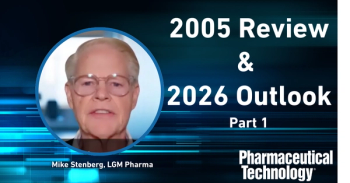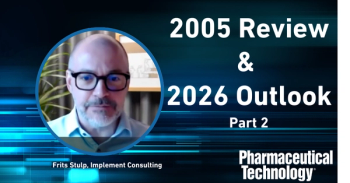
- Pharmaceutical Technology-02-02-2013
- Volume 37
- Issue 2
Navigating Emerging Markets — Eastern Europe
Eastern Europe is moving towards a goal of harmonized regulations.
At a high level, new regulatory requirements in emerging markets have a significant effect on matters such as product design, commercialization, and market-entry strategies. The regulatory environment in Europe is evolving, with significant effort to make regulations, including those governing pharmaceuticals and medical devices, more uniform across the region. Change toward harmonization has come in waves and has been characterized by country assimilation into the European Union. Countries can be grouped, therefore, by their status: the "original" (largely more western) member states, the "new" member states (including Bulgaria, Cyprus, Czech Republic, Estonia, Hungary, Latvia, Lithuania, Poland, Romania, Slovakia, and Slovenia), "candidate" countries (Croatia, Macedonia, Montenegro, Serbia, and Turkey), and potential candidate countries (Albania, Bosnia and Herzegovina, and Kosovo).
iStockphoto/ThinkStock images
While current country-specific trends may vary within and across Eastern Europe (given that each country is moving towards harmonizing with the EU at a different rate), countries can be grouped based on where they are in their evolution. Regardless, it can be expected that they're all moving towards a similar goal of harmonized regulations.
Jill E. Sackman
Key regulatory considerations
New member states. New member states must meet the same regulatory standards as the rest of the EU. In addition to the CE stamp, regulatory submission to the competent authority of the appropriate member state(s) is required for all interventional studies for pharmaceuticals, and all late-phase studies for medical devices. All countries have internal agencies that review products (such as the Bulgarian Drug Agency, or the Hungarian Health Science Council). Medical devices must also get approval from notified bodies, which are accredited organizations that are recognized by the EU to audit quality systems, test devices, and make sure they meet applicable standards.
Once products are approved, they will have to meet EU standard GMPs. The EU does have an agreement in place with FDA to share facility inspection data. EU regulatory standards, like FDA's, are based on those developed by the World Health Organization (WHO), but are regularly revised by the European Medicines Agency (EMA) and the European Commission on Public Health. GMP inspections are performed by each country's national regulatory agency, so while the guidelines may be standard across the countries, there may be country-specific political, social, and cultural considerations to take into account as well. Regulations are open to interpretation, so the way that even consistent regulations are interpreted within each country may be influenced by the biases of each country's leaders. As a result, having the right regulatory contacts in each country will be crucial.
Candidate countries and potential member states. Candidate countries and potential candidate countries must aim to meet the same requirements as those already a part of the EU. These countries all utilize a central body to approve products on a state level, while their notification, registration, and ethics requirements vary by country. These states may still need to do some work to harmonize with the other members of the EU in terms of regulatory processes, especially those that are earlier in the process of joining the EU.
To that end, the European Commission has launched the Instrument for Pre-accession Assistance Programme to assist these countries in the efforts to align with EMA requirements. The program includes a number of meetings and conferences to train the relevant national authorities. Generally, these nations have begun to set in place requirements to better align with EMA, adhering to similar exclusivity agreements and adjusting their inspection practices. Several nations have limited documentation of their activities, which may prove that they are not as organized in practice as they are on paper.
Implications for successful market entry and in-region partnering
There are several implications of the regulatory environment for successful market entry, finding reliable partnerships, and overall timelines and costs. Being able to anticipate future trends can ensure success in a rapidly changing market.
There are quite a few advantages of being able to foresee the direction that the EU market will take based on directives for the original member states. It's clear by the increasingly consistent processes of new member and candidate countries that the EU is aiming to harmonize regulations. This harmonization will be especially beneficial for manufacturers trying to gain entry into these emerging markets, because understanding multiple disparate processes can pose a significant barrier to entry.
At the same time, the degree and sources of variability in Eastern Europe are not to be ignored, and these countries cannot be treated with complete uniformity. There are significant challenges for countries working to increase stringency, which has caused regulations to evolve differently in different potential states. Many countries may have rather informal processes and customs that must be abided, even as processes become more formalized. Some of the Eastern European countries may be on track to becoming a member state and already have sophisticated regulatory processes. But other countries are still truly "emerging" and untapped markets that will have differences in regulatory processes, despite predictable trends towards harmonization.
Comparing two current candidate states provides an illustration of some of the differences that arise despite their shared goal of EU harmonization. Turkey and Serbia are both candidate states, and both have faced political challenges to accession, but their paths have progressed differently.
Turkey has been a candidate since 2005. Turkey began introducing market exclusivity in 2005, as part of their efforts to conform to EU requirements, which had not existed previously. In the intervening years, other reforms have been introduced, but enforcement remains an issue, as evidenced by the EU's rejection of several of Turkey's GMP certificates. At the same time, economic realities also affect the market potential for pharmaceuticals. Turkey has instituted a number of price controls in the pharmaceutical space to combat budget deficits, which make the market considerably less attractive for pharmaceutical companies.
Political dynamics affect the landscape as well. Turkey's accession has long been controversial throughout the EU; many have objected to Turkey's status as a European country, due to its location in Asia Minor. In addition, conflicts with new member state Cyprus have stalled talks. As a result of the drawn-out accession process, the Turkish populace has grown skeptical of ever acceding to the EU, and there is diminished incentive to further harmonize and conform with EMA processes.
Serbia, on the other hand, has had a different path. Serbia has only been a candidate country since March of 2012, but is expected to accede before Turkey does. Since its official application date, the only obstacle it has had to overcome is its arrest and extradition of Ratko Mladic and Goran Hadic in 2011 for crimes against humanity, war crimes, and genocide as part of the International Criminal Tribunal for the former Yugoslavia. As a result, Serbia's path to member status is considerably clearer than Turkey's.
This lack of uncertainty is reflected in Serbia's regulations. Serbia has already made changes to its practices to reflect greater harmonization with EMA regulations. Some areas are already considered to be highly harmonized, including labeling practices and approval processes. Other areas, such as reimbursement, are further away from the rest of the EU.
As these examples illustrate, understanding the broader political landscape, and finding appropriate in-region partners in each country are challenges that pharmaceutical companies will face. Partners can include local agencies, as well as people familiar with the regulatory and cultural environment. Because the EU guidelines clearly specify outsourced activities as under the purview of the senior management of the outsourcing company, it will be crucial that these organizations be able to withstand regulatory scrutiny. And just as crucial to maximize expansion into a new region is the ability of these partners to represent long-term interests and serve as strategic partners in the region. That said, local partners will also have crucial knowledge of cultural considerations, so appropriate partnering can be enormously beneficial.
Moving forward in Eastern Europe
In the end, what's likely to occur is that the more developed nations become, the more integrated regulatory processes will be across the EU. As regulatory processes become more standardized, cultural, health, and demographic differences will emerge as the key differentiating characteristics in these countries. As a result, understanding these regional differences will be just as crucial as understanding regulatory and quality requirements.
Jill E. Sackman, DVM, PhD, is a senior consultant at Numerof & Associates, Inc. (NAI), St. Louis, MO,
Articles in this issue
almost 13 years ago
Q&A With Chris Eclesalmost 13 years ago
Seeking Cold Chain Efficiencyalmost 13 years ago
The EU's Falsified Medicines Directive and APIsalmost 13 years ago
End of the Dedicated CMO?almost 13 years ago
Offering a Pharma View of Social Mediaalmost 13 years ago
Tracking Growth in Biologicsalmost 13 years ago
Report from Indiaalmost 13 years ago
Rouge Contaminants and Water Systemsalmost 13 years ago
Pharma Conversation & Communityalmost 13 years ago
GMP Compliance Becomes Prominent Enforcement IssueNewsletter
Get the essential updates shaping the future of pharma manufacturing and compliance—subscribe today to Pharmaceutical Technology and never miss a breakthrough.




